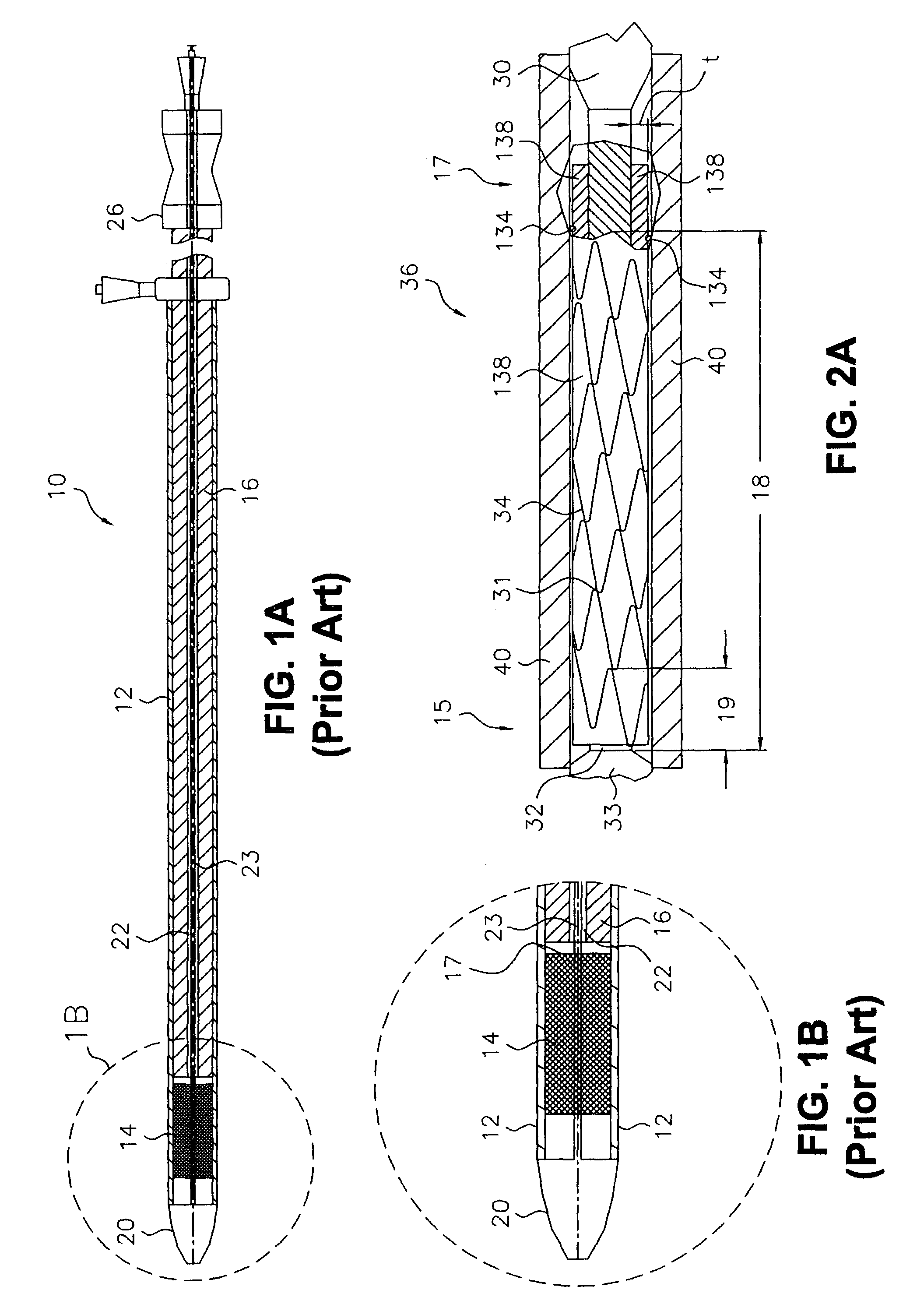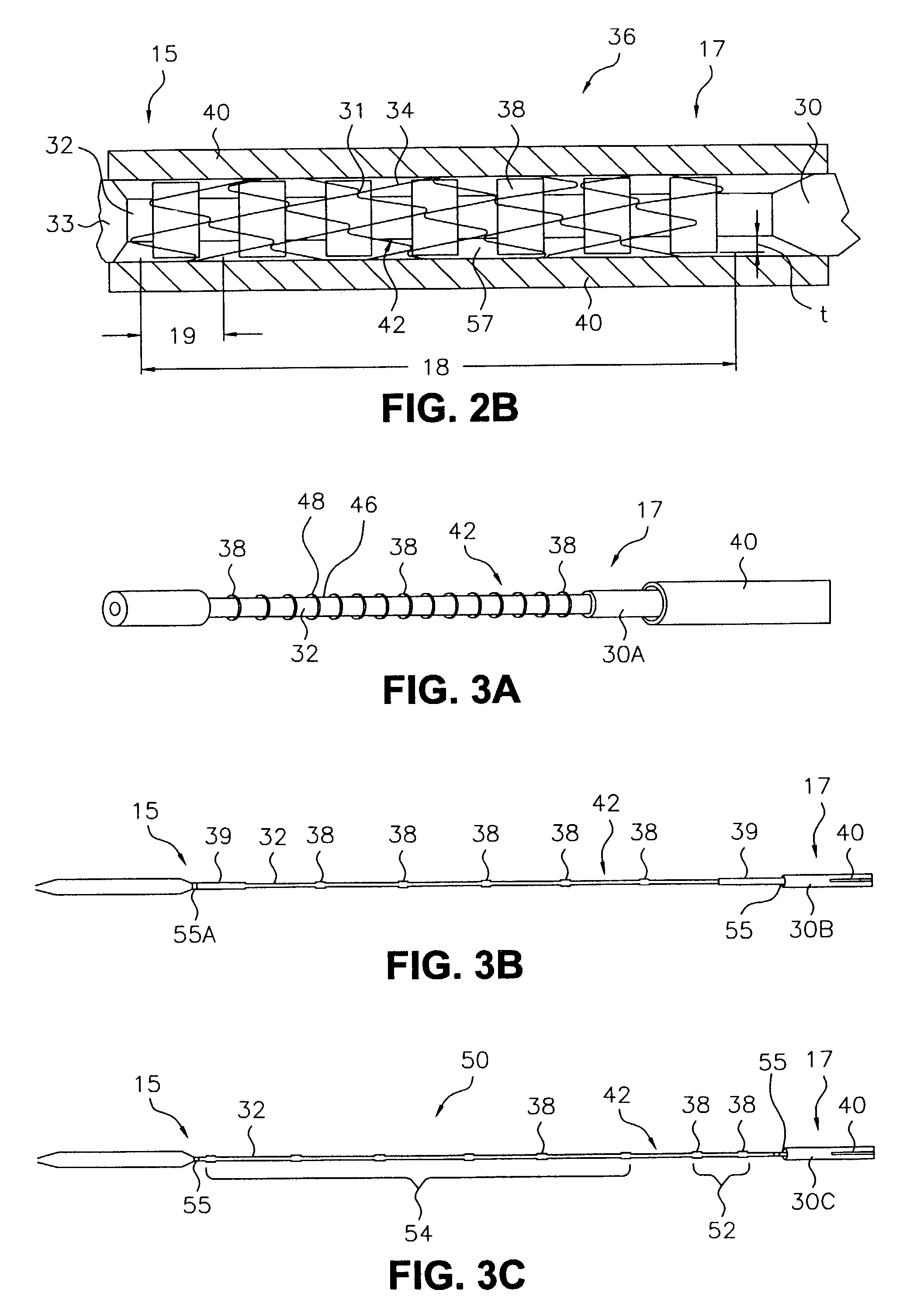Stent delivery system with nested stabilizer and method of loading and using same
a technology of stabilizer and stent, which is applied in the field of endoluminal grafts or “ stents”, can solve the problems of stent collapsing, low column strength segment which is one which tends to collapse, damage to the stent or incorrect deployment, etc., and achieves the effects of low column strength, low column strength, and convenient use of stents
- Summary
- Abstract
- Description
- Claims
- Application Information
AI Technical Summary
Benefits of technology
Problems solved by technology
Method used
Image
Examples
Embodiment Construction
[0028]The invention will next be illustrated with reference to the figures wherein similar numbers indicate the same elements in all figures. Such figures are intended to be illustrative rather than limiting and are included herewith to facilitate the explanation of the apparatus of the present invention.
[0029]As shown in FIGS. 2A and 2B, exemplary stent delivery systems 36A and 36B, respectively, of the present invention each include a sheath 40 (shown in longitudinal-section) and a stabilizer 30A and 30B (shown in full) for deploying stent 34 relative to sheath 40. Stent 34 comprises a periphery, such as a wire structure, that defines an interior space therein through which stabilizer 30A or 30B is axially disposed. Stabilizer 30A or 30B comprises an inner core 32 having a surface 42 that underlies (“nests” within) the compressed stent during introduction into the body. Catheter tip 33 is attached to the distal end of stabilizer inner core 32, distal to an exemplary stent 34. As u...
PUM
 Login to View More
Login to View More Abstract
Description
Claims
Application Information
 Login to View More
Login to View More - R&D
- Intellectual Property
- Life Sciences
- Materials
- Tech Scout
- Unparalleled Data Quality
- Higher Quality Content
- 60% Fewer Hallucinations
Browse by: Latest US Patents, China's latest patents, Technical Efficacy Thesaurus, Application Domain, Technology Topic, Popular Technical Reports.
© 2025 PatSnap. All rights reserved.Legal|Privacy policy|Modern Slavery Act Transparency Statement|Sitemap|About US| Contact US: help@patsnap.com



